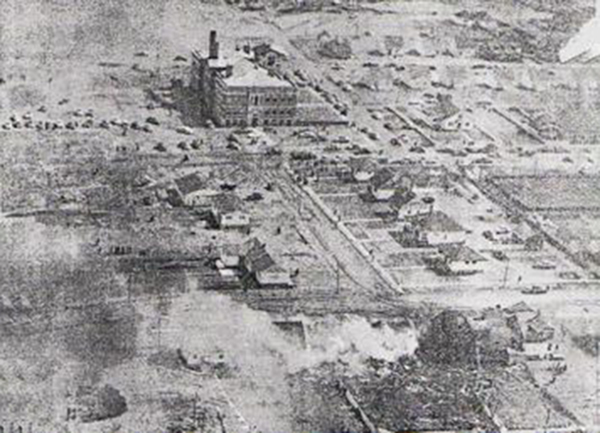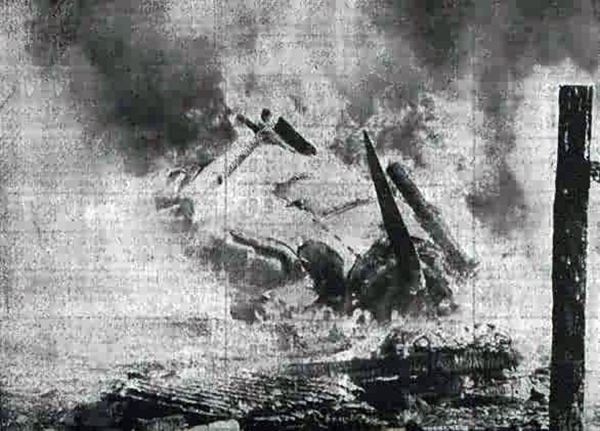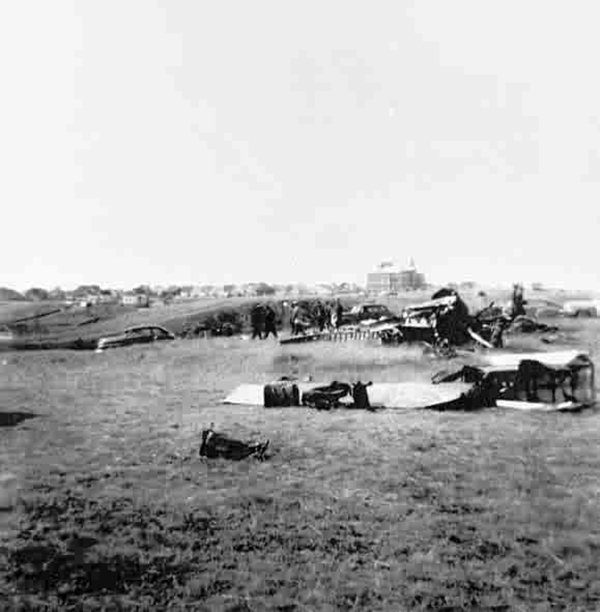Country
Operator Image
Crash of a Douglas DC-8-54F in Sainte-Thérèse-de-Blainville: 118 killed
Date & Time:
Nov 29, 1963 at 1833 LT
Registration:
CF-TJN
Survivors:
No
Schedule:
Montreal - Toronto
MSN:
45654
YOM:
1963
Flight number:
TCA831
Crew on board:
7
Crew fatalities:
Pax on board:
111
Pax fatalities:
Other fatalities:
Total fatalities:
118
Captain / Total hours on type:
561.00
Copilot / Total hours on type:
390
Aircraft flight hours:
2174
Circumstances:
The Douglas DC-8 aircraft was on a regular scheduled flight Montreal-Dorval Airport (YUL) to Toronto (YYZ), Canada, scheduled to leave Montreal at 18:10. There were some delays in the boarding of the passengers and Flight 831 started its takeoff roll on runway 06R at approximately 18:28. Weather was reported as overcast, light rain and fog, visibility 4 miles, surface wind NE at 12 mph. The flight was instructed to report passing 3000 feet and 7000 feet on the climb-out from the airport. The aircraft took off normally, reported in at 3,000 feet and acknowledged a clearance for a left turn to St. Eustache. This was the last radio contact with the flight. The aircraft then deviated from its normal flight path about 55 degrees to the right and began a quick descent. At 18:33, 16.9 miles from the airport, the DC-8 struck the ground at a speed of 470-485 knots descending at an angle of about 55 degrees (+/- 7deg). The airplane plunged into the ground and totally disintegrated upon impact. There were no survivors among the 118 occupants.
Probable cause:
It is concluded that the actual cause of the accident cannot be determined with certainty. It is concluded that the most probable chain of events which occasioned the crash can be identified as follows. For one of the reasons which are set forth below, the pilot applied the near maximum available Aircraft Nose Down Trim to the horizontal stabilizer. The aircraft then commenced a diving descent building up speed at such a rate that any attempted recovery was ineffective because the stabilizer hydraulic motor had stalled, thus making it impossible within the altitude available to trim the aircraft out of the extreme AND position.
(a) The first reason which might have indicated to the pilot the necessity for applying, nose down trim could have been icing of the Pitot system as discussed in the Analysis of Evidence. While the experience and competency of the crew would likely have led them to recognize the fault in time to take corrective action, the possibility that this condition caused the application of AND trim cannot be dismissed.
(b) The second reason could have been a failure of a vertical gyro. The evidence indicated that it was possible to have a failure of a vertical gyro without an associated warning flag. If such a failure occurred and the aircraft was being flown with reference to the associated artificial horizon instrument it is likely that the pilot would be misled by the erroneous indication and could have applied nosedown trim. Aircraft CF-TJN was equipped with a standby artificial horizon located on the Captain's instrument panel and this cross reference together with the experience and competency of the crew would likely have led them to recognize the fault in time to take corrective action. Again, the possibility that this condition caused the application of AND trim cannot be dismissed.
(c) The third reason could have been an unprogrammed and unnoticed extension of the Pitch Trim Compensator. This would have had the effect of moving the control column back, the elevators up and the aircraft to a nose up condition. The pilot would likely have counteracted the pitch up force of the elevators by trimming the horizontal stabilizer to or near to the limit of the Aircraft Nose Down setting. The evidence shows that the simultaneous application of up elevator from the PTC and the application of as little as 0.5 degrees of Aircraft Nose Down trim on the horizontal stabilizer has an adverse effect on aircraft stability and can create a difficult control problem. The problems of instability and control are more serious as further AND trim is applied. In aircraft CF-TJN 2.0 degrees of AND trim was available and it appears that the pilot applied at least 1.6 degrees of the available trim. It is unlikely that the flight crew were aware of the serious stability and-control problems that we now know can result from the combination of extended PTC and AND trim, even if they had been aware that the PTC had extended. The aircraft would then be in a condition where a slight displacement from its trim point would lead to divergent oscillations. In other words, a minor change. of attitude, easily caused by the existing turbulence, would build up into large displacements. The inadequate control available to the pilot and the lack of an external horizon reference would likely result in the aircraft eventually assuming a dive attitude.
It is concluded that an unprogrammed extension of the Pitch Trim Compensator is the most probable cause for the pilot having applied Aircraft Nose Down Trim, which initiated the chain of events that culminated in the crash.
(a) The first reason which might have indicated to the pilot the necessity for applying, nose down trim could have been icing of the Pitot system as discussed in the Analysis of Evidence. While the experience and competency of the crew would likely have led them to recognize the fault in time to take corrective action, the possibility that this condition caused the application of AND trim cannot be dismissed.
(b) The second reason could have been a failure of a vertical gyro. The evidence indicated that it was possible to have a failure of a vertical gyro without an associated warning flag. If such a failure occurred and the aircraft was being flown with reference to the associated artificial horizon instrument it is likely that the pilot would be misled by the erroneous indication and could have applied nosedown trim. Aircraft CF-TJN was equipped with a standby artificial horizon located on the Captain's instrument panel and this cross reference together with the experience and competency of the crew would likely have led them to recognize the fault in time to take corrective action. Again, the possibility that this condition caused the application of AND trim cannot be dismissed.
(c) The third reason could have been an unprogrammed and unnoticed extension of the Pitch Trim Compensator. This would have had the effect of moving the control column back, the elevators up and the aircraft to a nose up condition. The pilot would likely have counteracted the pitch up force of the elevators by trimming the horizontal stabilizer to or near to the limit of the Aircraft Nose Down setting. The evidence shows that the simultaneous application of up elevator from the PTC and the application of as little as 0.5 degrees of Aircraft Nose Down trim on the horizontal stabilizer has an adverse effect on aircraft stability and can create a difficult control problem. The problems of instability and control are more serious as further AND trim is applied. In aircraft CF-TJN 2.0 degrees of AND trim was available and it appears that the pilot applied at least 1.6 degrees of the available trim. It is unlikely that the flight crew were aware of the serious stability and-control problems that we now know can result from the combination of extended PTC and AND trim, even if they had been aware that the PTC had extended. The aircraft would then be in a condition where a slight displacement from its trim point would lead to divergent oscillations. In other words, a minor change. of attitude, easily caused by the existing turbulence, would build up into large displacements. The inadequate control available to the pilot and the lack of an external horizon reference would likely result in the aircraft eventually assuming a dive attitude.
It is concluded that an unprogrammed extension of the Pitch Trim Compensator is the most probable cause for the pilot having applied Aircraft Nose Down Trim, which initiated the chain of events that culminated in the crash.
Final Report:
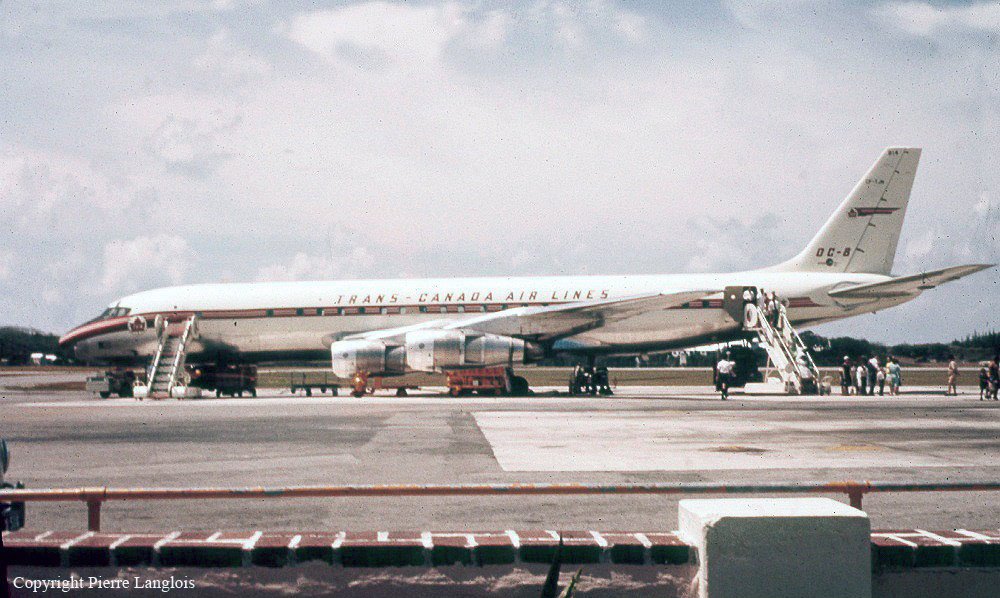
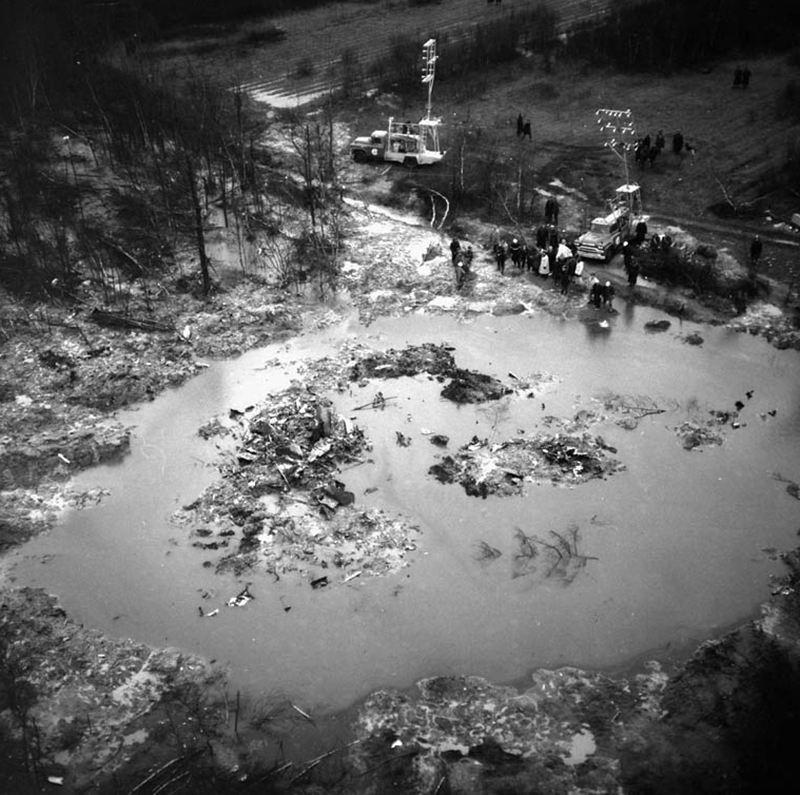
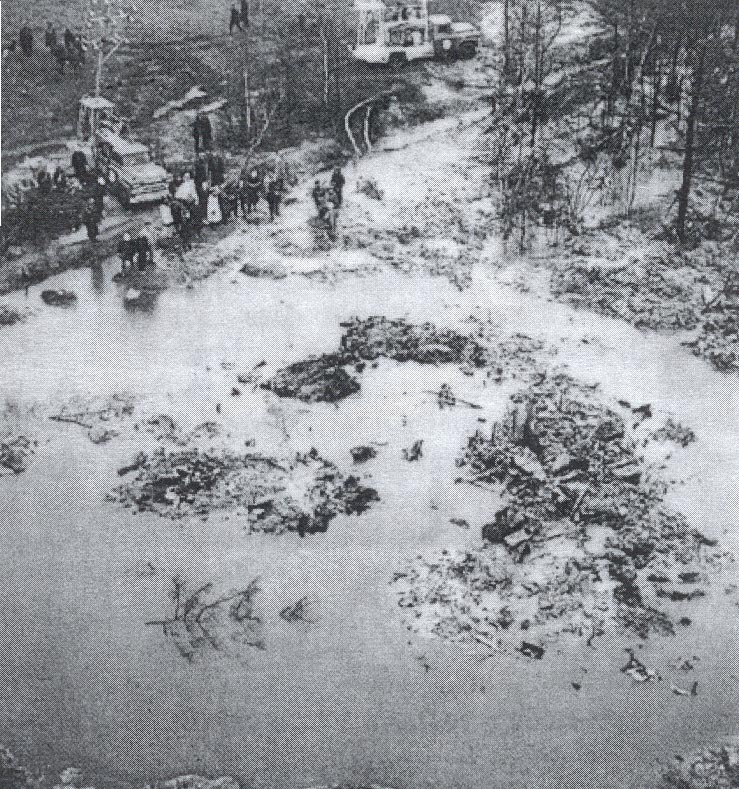
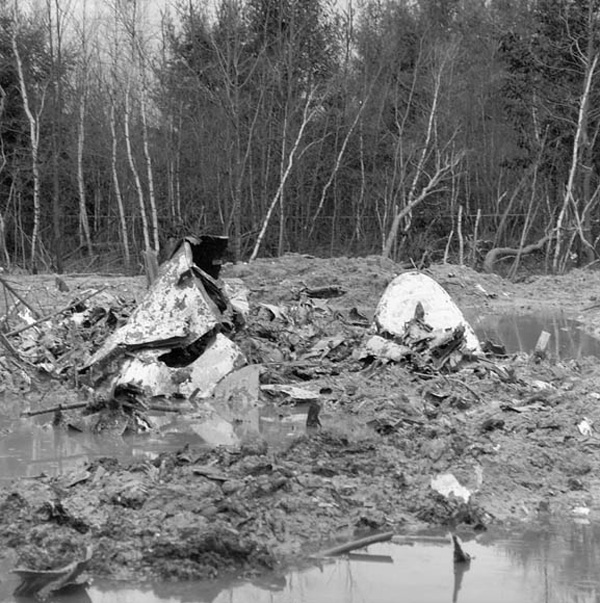
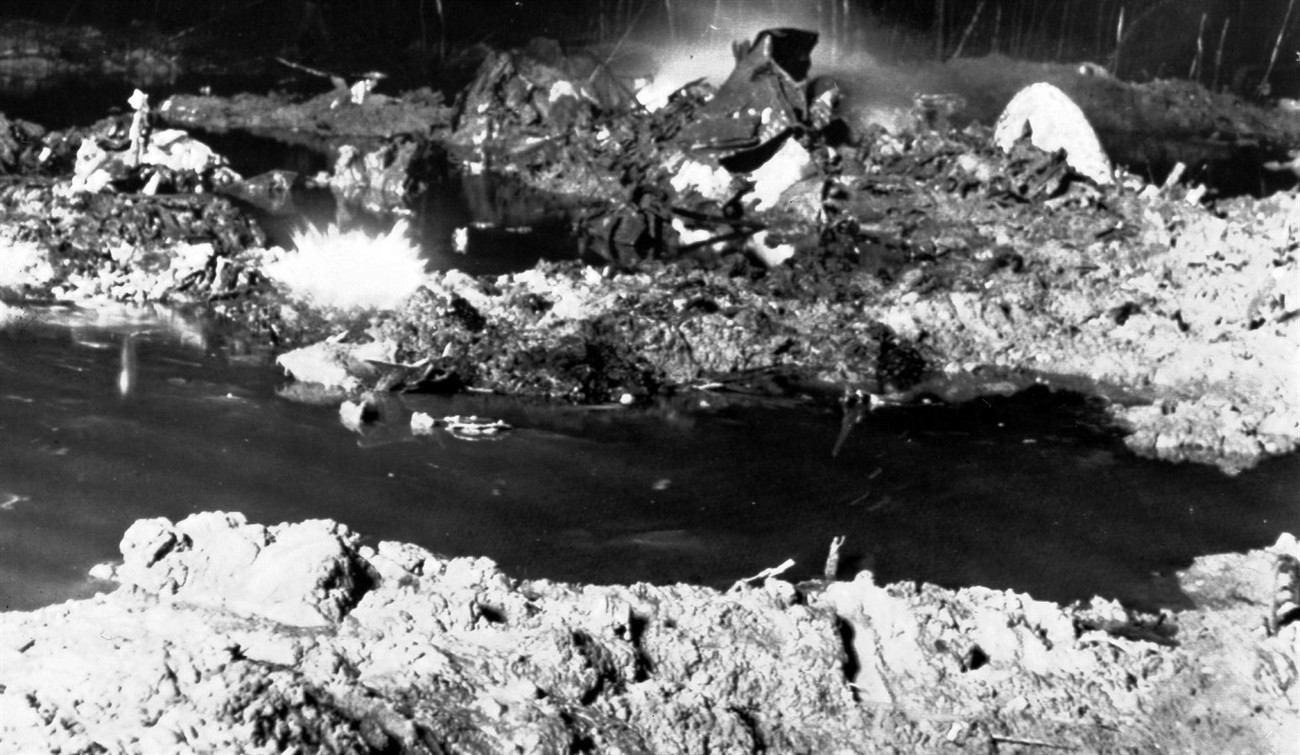

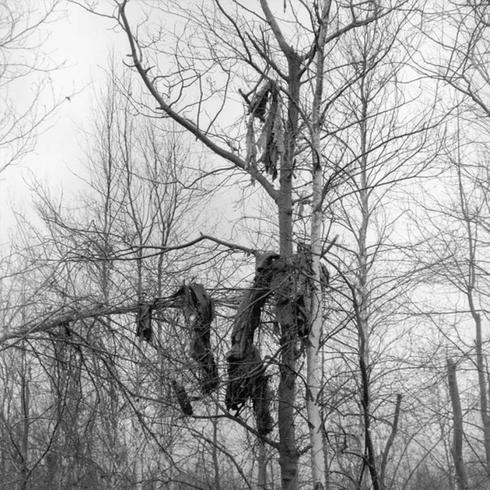
Crash of a Vickers 757 Viscount in Toronto
Date & Time:
Oct 3, 1959
Registration:
CF-TGY
Survivors:
Yes
MSN:
143
YOM:
1956
Crew on board:
4
Crew fatalities:
Pax on board:
34
Pax fatalities:
Other fatalities:
Total fatalities:
0
Aircraft flight hours:
9404
Aircraft flight cycles:
7800
Circumstances:
On approach to Toronto-Malton Airport, the crew encountered poor weather conditions with thunderstorm activity and heavy rain falls. The aircraft descended below the glide until it struck the ground. On impact, then undercarriage and the engines were sheared and the airplane slid for several yards before coming to rest 3,400 feet short of runway threshold. All 38 occupants were evacuated, ten of them were injured. The aircraft was destroyed.
Probable cause:
The accident was the consequence of a misjudged approach on part of the flying crew but weather conditions were considered as poor with presence of windshear.
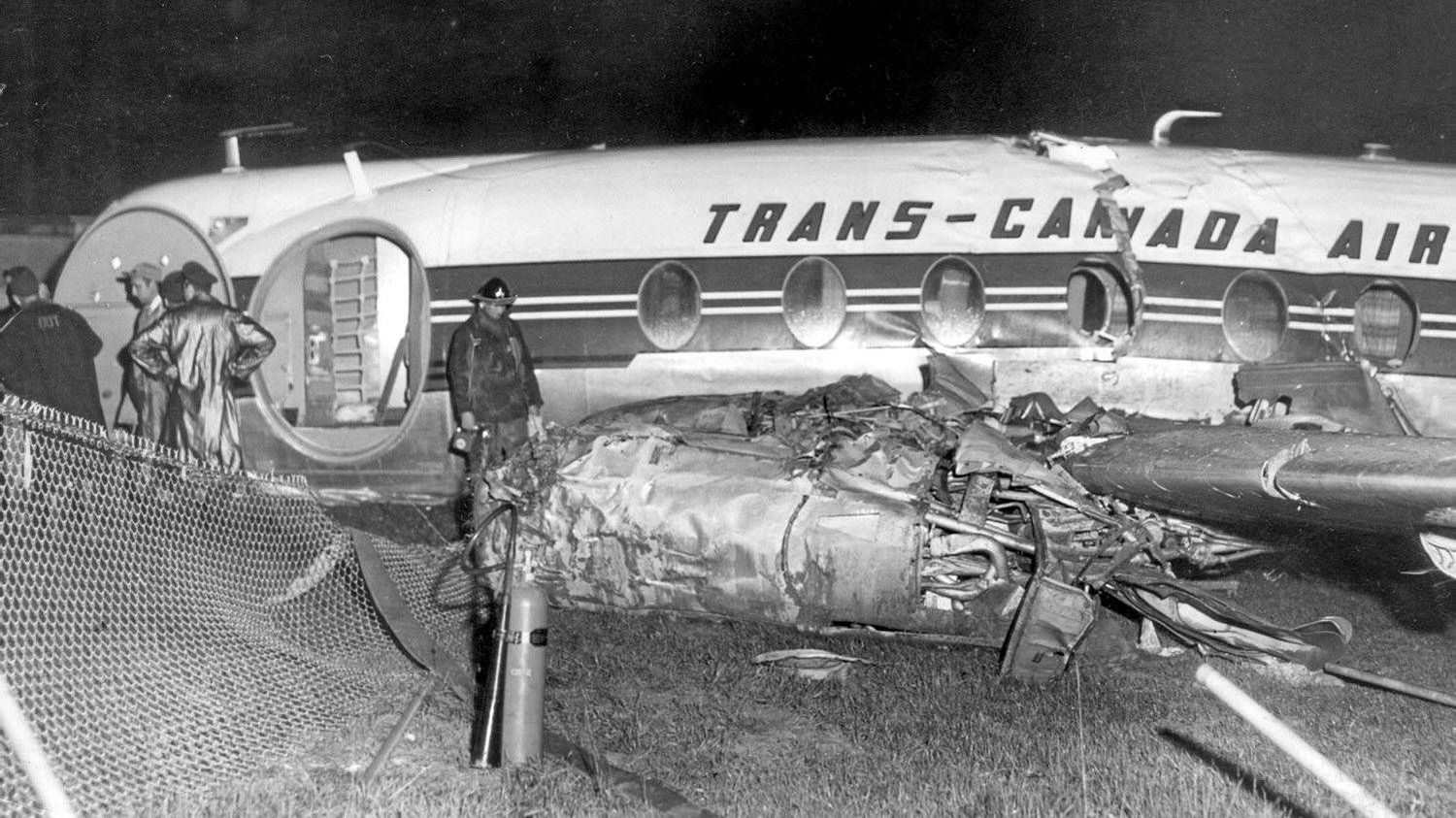
Crash of a Vickers 724 Viscount in New York
Date & Time:
Nov 10, 1958 at 1101 LT
Registration:
CF-TGL
Survivors:
Yes
Schedule:
New York - Montreal
MSN:
43
YOM:
1955
Flight number:
TCA604
Crew on board:
0
Crew fatalities:
Pax on board:
0
Pax fatalities:
Other fatalities:
Total fatalities:
0
Circumstances:
The Viscount was parked at gate to board passengers when it was struck by a Seaboard & Western Airlines' Lockheed L-1049D Super Constellation which was performing training flight LN800 at Idlewild Airport. The Constellation began its takeoff run on runway 31R of the New York International Airport at 1100. When an airspeed of 117 knots (V 2) was reached, the aircraft became airborne and climbed to an altitude of approximately 25 feet. At this altitude severe control difficulty was encountered, causing the aircraft to veer suddenly to the left and the left wing to lower 20 to 30 degrees. This wing struck the runway and from this point on directional control of the aircraft was lost. The aircraft skidded In a westerly direction into a temporary terminal area and came to rest after striking the Viscount. All five crew members from the Constellation were injured while the Viscount was empty. Both aircraft were totally destroyed by fire.
Probable cause:
The Board determines that the probable cause of this accident was an unwanted propeller reversal at a low altitude occurring immediately after takeoff. A contributing factor was the inadequate overhaul procedure employed by the propeller manufacturer.
Final Report:
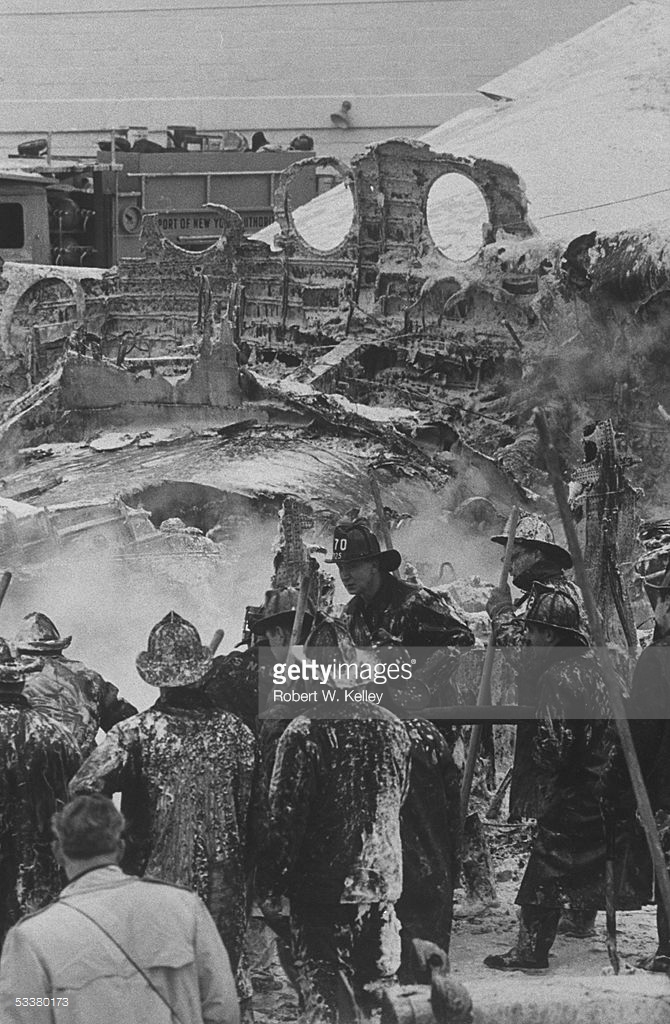
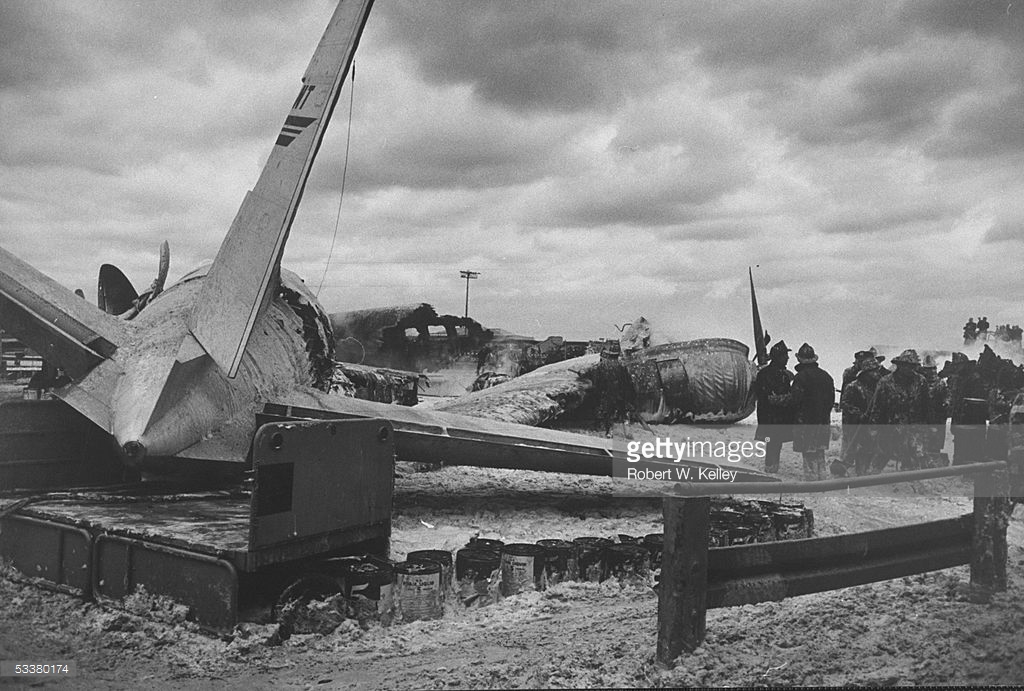
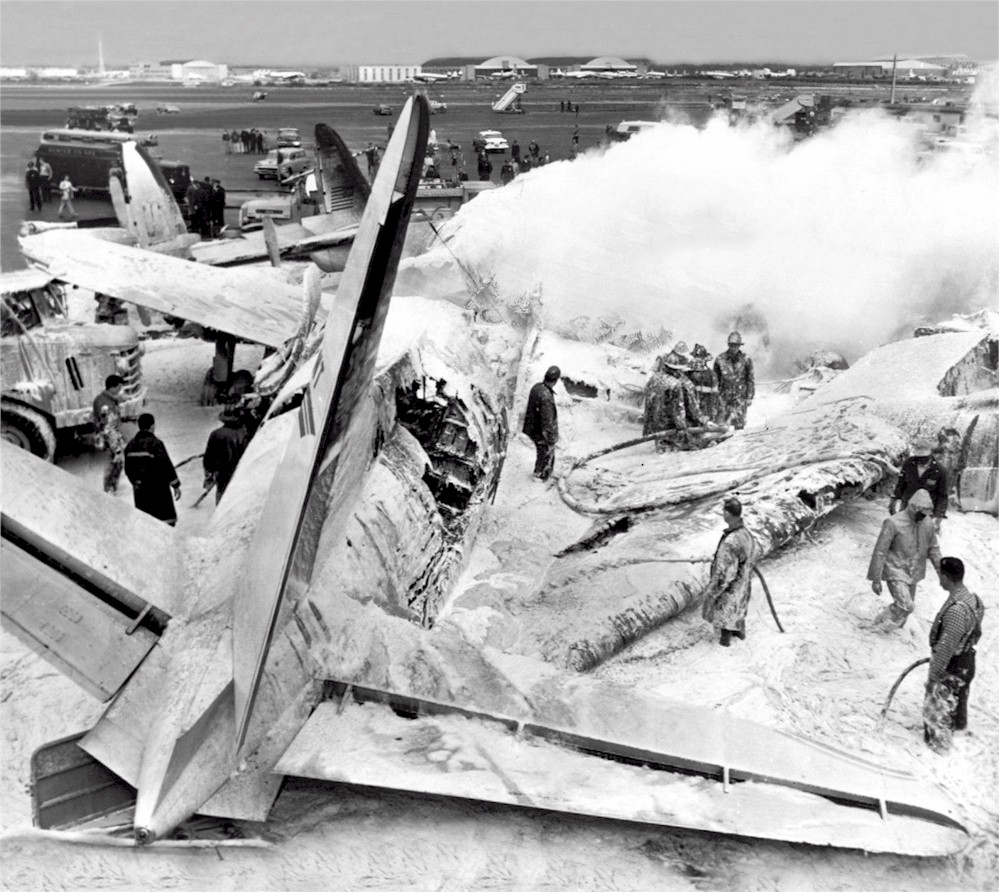
Crash of a Canadair C-4M2 North Star on Mt Slesse: 62 killed
Date & Time:
Dec 9, 1956 at 1910 LT
Registration:
CF-TFD
Survivors:
No
Schedule:
Vancouver – Calgary – Toronto – Montreal
MSN:
128
YOM:
1948
Flight number:
TCA810
Crew on board:
3
Crew fatalities:
Pax on board:
59
Pax fatalities:
Other fatalities:
Total fatalities:
62
Circumstances:
Flight 810-9 was a scheduled flight from Vancouver to Toronto. It carried a crew of 3 and 59 passagers. A cruising altitude of 19,000 feet was selected. The aircraft departed Vancouver at 1810 hours Pacific standard time on 9 December 1956 and was cleared by Air Traffic Control to Calgary Airport via Mud Bay, Abbotsford and Cultus Lake (Red 75 and Red 44). The flight made the normal position reports giving altitude and reported icing beginning at 16 000 feet, moderate turbulence 16 000 feet to 18 000 feet, heavy jolts at 19 000 feet and at 1848 requested clearance to 21 000 feet. At 1852, 810 reported a fire in No. 2 engine, that this engine had been shut down and that the aircraft was returning to Vancouver via Cultus and Abbotsford. Shortly afterwards the flight reported difficulty in maintaining height and requested clearance to descend on Green 1. The last altitude reported by Flight 810 was just above 15 000 feet which would be maintained if possible. At 191 0 hours Flight 810 reported passing Hope, the altitude was not given but clearance to descend to 10 000 feet was requested. ATC cleared 810 to cross the Vancouver range at 8 000 feet or above. Flight 810 acknowledged and this was the last radio contact. All through this latter part of the flight the tone of the voice in the radio transmission, as recorded on TCA tape, did not suggest undue concern by the crew of 810. Nothing more was heard of the aircraft until a part was dis- covered by mountaineers on 12 May 1957, when they .were climbing Mt Slesse, at approximately the 7 600-foot level, adjacent to the third highest peak.
Probable cause:
The cause for the aircraft being at an altitude low enough to strike Mount Slesse is undetermined, but there is a high probability that the aircraft, while flying on 3 engines, encountered either severe icing, turbulence, subsidence, or a combination of all three, or suffered some other difficulty of such a sudden or dire nature that the crew were unable to communicate with any agency or control the aircraft. For undetermined reasons the aircraft was not on Green Airway No. 1 to which it had been cleared by Air Traffic Control. The following factors contributed to the accident:
- Loss of engine power No. 2 engine shut-down, fire suspected,
- Existence in the area of known subsidence, severe turbulence, and moderate to severe icing probably in the lower levels.
- Loss of engine power No. 2 engine shut-down, fire suspected,
- Existence in the area of known subsidence, severe turbulence, and moderate to severe icing probably in the lower levels.
Final Report:
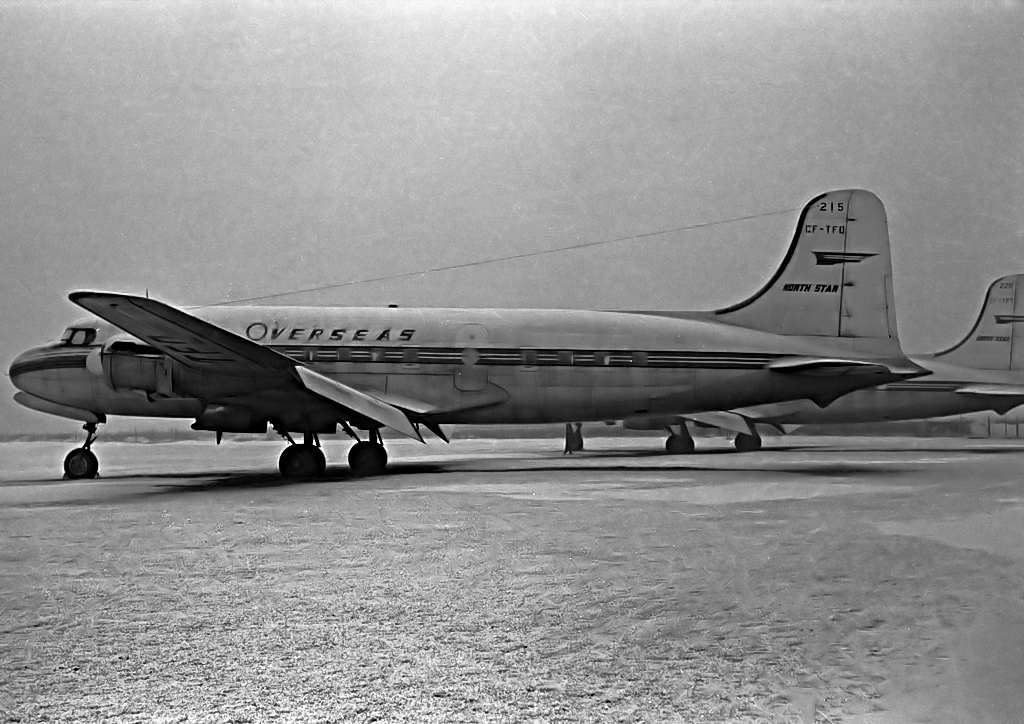
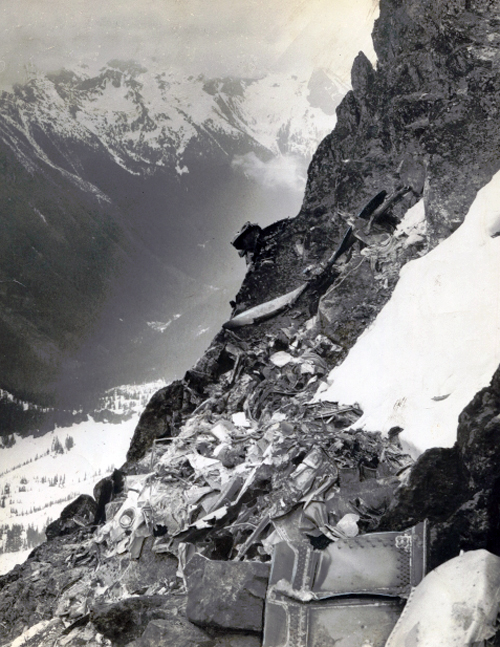
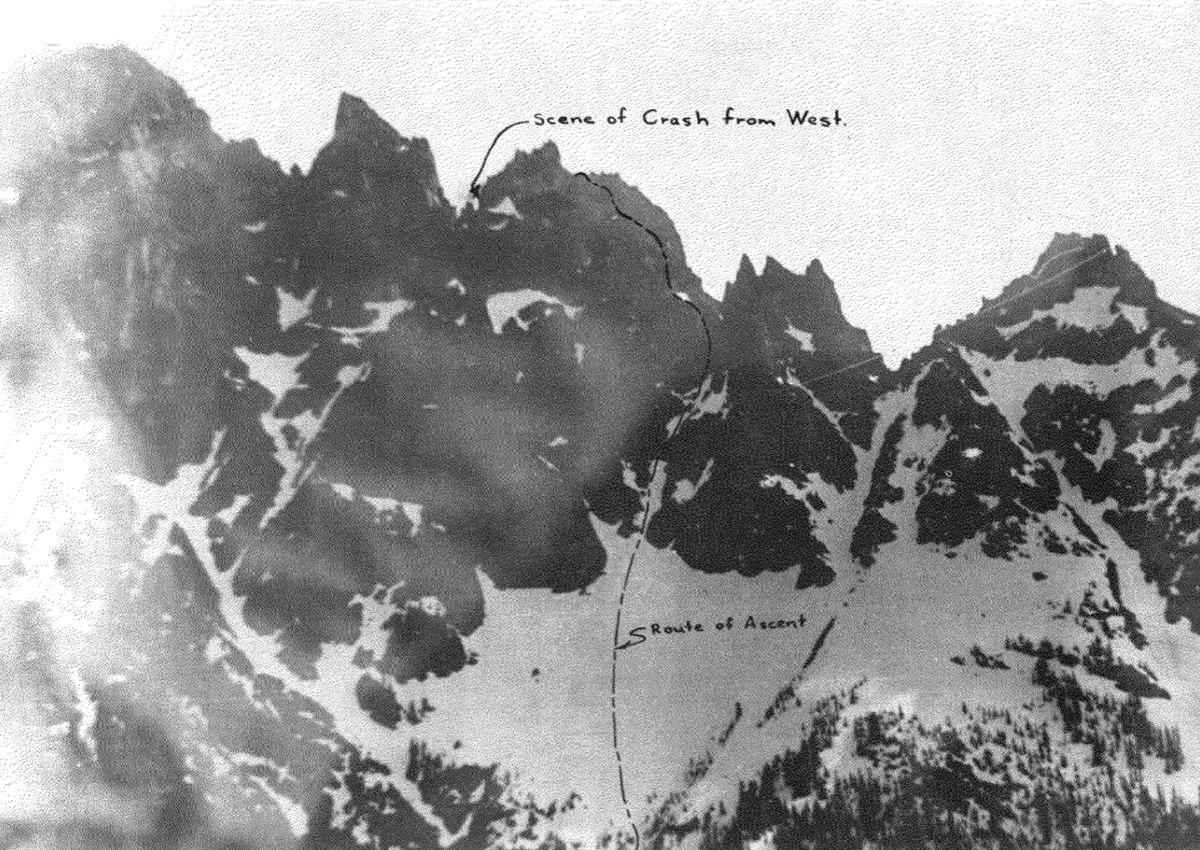
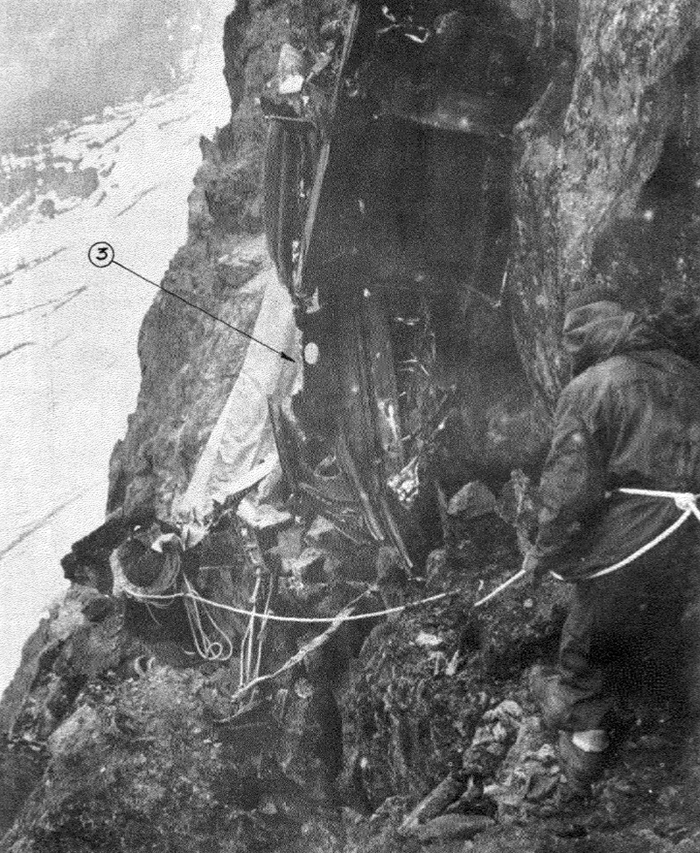
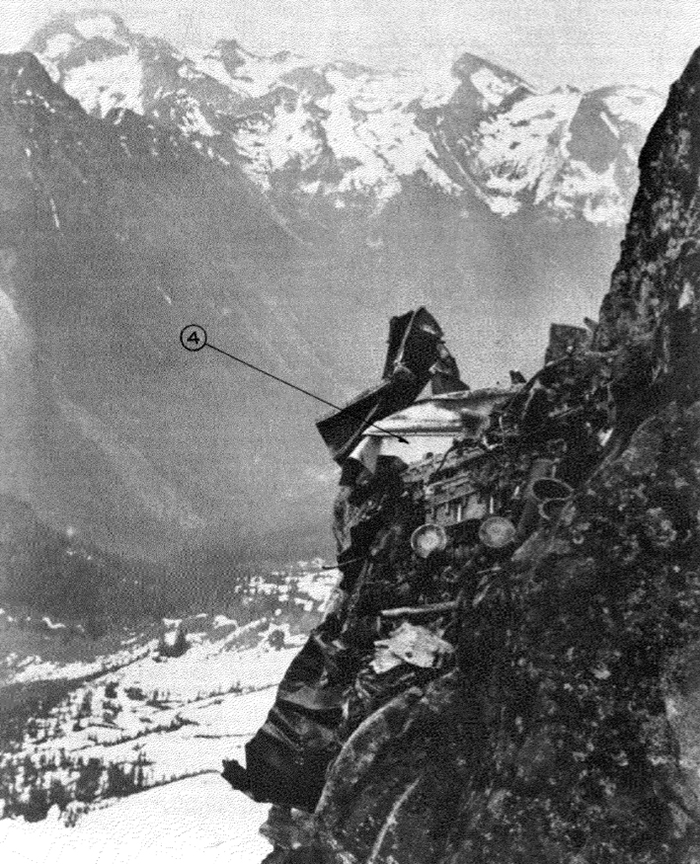
Crash of a Lockheed L-1049E Super Constellation in Brampton
Date & Time:
Dec 17, 1954 at 2132 LT
Registration:
CF-TGG
Survivors:
Yes
Schedule:
Tampa-Toronto
MSN:
4564
YOM:
1954
Flight number:
TCA407
Crew on board:
7
Crew fatalities:
Pax on board:
16
Pax fatalities:
Other fatalities:
Total fatalities:
0
Aircraft flight hours:
763
Circumstances:
Following an uneventful flight from Tampa, the captain started a night approach to Toronto-Malton Airport. During an ILS approach in poor weather conditions (300 feet ceiling), the four engine aircraft descended below the glide and hit the ground about 11 miles short of runway 10. It slid for 2,000 feet before coming to rest in flames. All 23 occupants were injured while the aircraft was destroyed.
Probable cause:
The Board of Inquiry found that the accident was caused by negligence on the part of the captain. The following findings were reported:
- The first officer, despite his duties which involved "In-Range" and "Pre-Landing" checks during the approach pattern, displayed an alertness concerning the procedures carried out by the captain, and on three separate occasions indicated to the captain conditions which required correction,
- The captain of the aircraft showed poor airmanship in the execution of his approach pattern, in that he made inadequate allowance for the strong prevailing wind and failed to utilize the ADF receiver to home on the outer marker,
- The captain failed to carry out an approved ILS let-down and, in so far as the position and the altitude of the aircraft were concerned, he ignored the indications of the ADF needle tuned to the marker, the ILS glide path needle and the altimeter,
- The captain ignored the warning from his first officer that he had descended below the regulation height,
- The captain was under the impression that he was very much closer to the airport than he actually was,
- The captain broke the regulations regarding the minimum altitude at which the glide path is to be intersected, the minimum altitude at which the outer marker is to be crossed, and the minimum altitude to which the aircraft may descend on the approach at Malton without becoming contact, and continued his descent until he flew into the ground.
- The first officer, despite his duties which involved "In-Range" and "Pre-Landing" checks during the approach pattern, displayed an alertness concerning the procedures carried out by the captain, and on three separate occasions indicated to the captain conditions which required correction,
- The captain of the aircraft showed poor airmanship in the execution of his approach pattern, in that he made inadequate allowance for the strong prevailing wind and failed to utilize the ADF receiver to home on the outer marker,
- The captain failed to carry out an approved ILS let-down and, in so far as the position and the altitude of the aircraft were concerned, he ignored the indications of the ADF needle tuned to the marker, the ILS glide path needle and the altimeter,
- The captain ignored the warning from his first officer that he had descended below the regulation height,
- The captain was under the impression that he was very much closer to the airport than he actually was,
- The captain broke the regulations regarding the minimum altitude at which the glide path is to be intersected, the minimum altitude at which the outer marker is to be crossed, and the minimum altitude to which the aircraft may descend on the approach at Malton without becoming contact, and continued his descent until he flew into the ground.
Final Report:
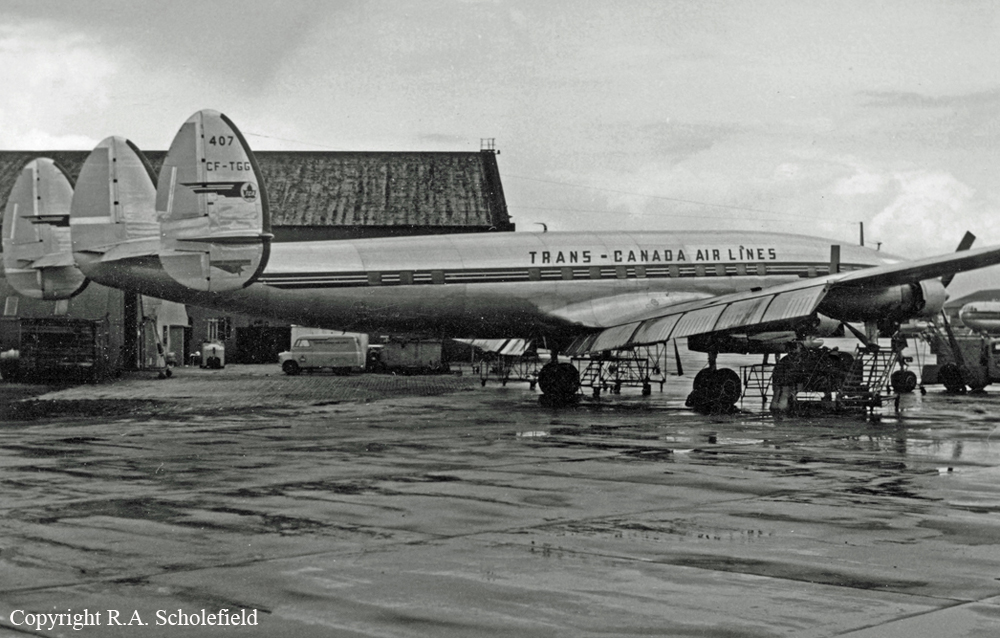
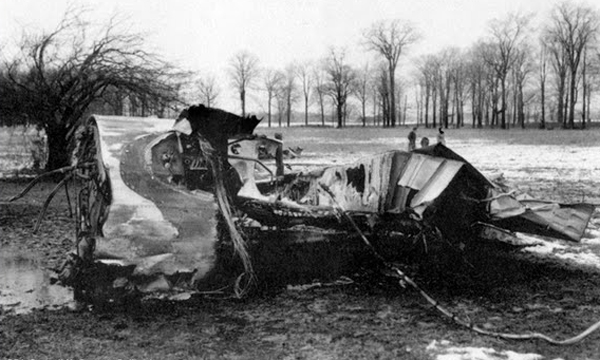
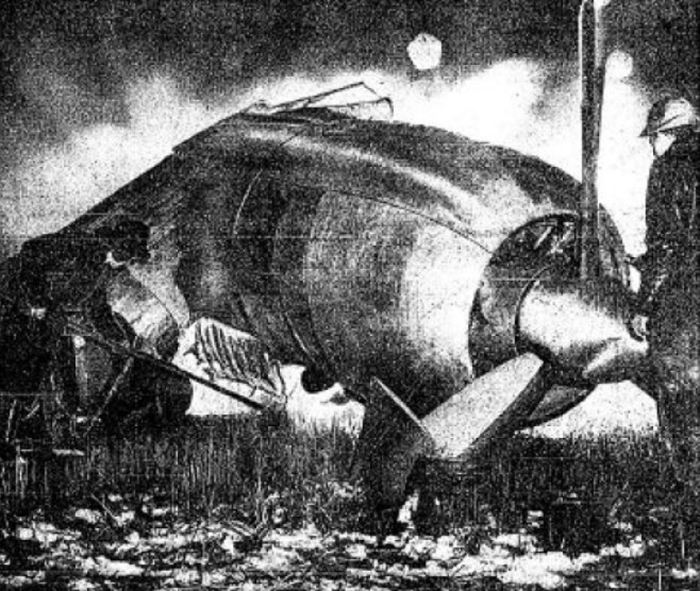
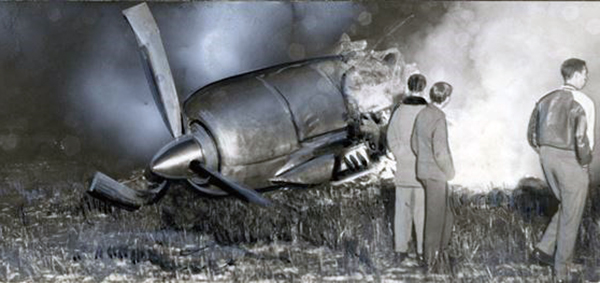
Crash of a Canadair C-4M North Star in Moose Jaw: 36 killed
Date & Time:
Apr 8, 1954 at 1003 LT
Registration:
CF-TFW
Survivors:
No
Schedule:
Winnipeg – Vancouver
MSN:
150
YOM:
1949
Flight number:
TCA223
Crew on board:
4
Crew fatalities:
Pax on board:
31
Pax fatalities:
Other fatalities:
Total fatalities:
36
Circumstances:
While cruising at an altitude of 6,000 under IFR rules, the four engine aircraft collided with a RCAF North American T-6 Harvard registered 3309. Sole on board, the pilote just took off from Moose Jaw Airfield for a local training mission. Following the collision, both aircraft went out of control and dove into the ground. The Harvard crash on a golf course while the North Star crashed onto a house located in the suburb of Moose Jaw. The pilot of the Harvard was killed as well as all 35 occupants on board the TCAL aircraft and one people inside the house.
Probable cause:
The accident was caused by the following factors:
- Failure on the part of the pilots of both aircraft to maintain a proper lookout, the onus of responsibility for keeping out of the way being with the Harvard aircraft as it had the other on its own right side.
- The Harvard aircraft in crossing the airway climbed through altitudes normally used by aircraft flying along the airway.
- The Board up to the present has been unable to determine whether the window post on the left side of the Canadair C4-1 aircraft hid the Harvard aircraft from view, but there are indications that this was possible.
- Failure on the part of the pilots of both aircraft to maintain a proper lookout, the onus of responsibility for keeping out of the way being with the Harvard aircraft as it had the other on its own right side.
- The Harvard aircraft in crossing the airway climbed through altitudes normally used by aircraft flying along the airway.
- The Board up to the present has been unable to determine whether the window post on the left side of the Canadair C4-1 aircraft hid the Harvard aircraft from view, but there are indications that this was possible.
Final Report:
